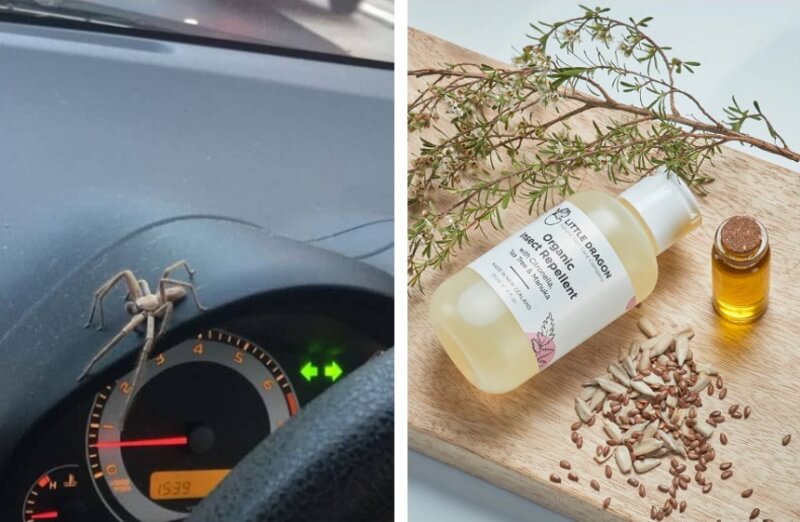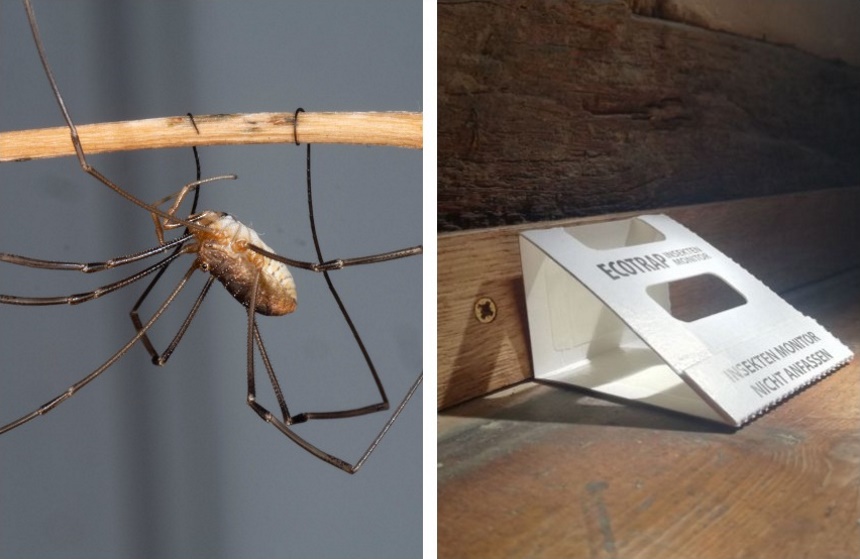

We know that spiders primarily feast on insects but have you ever wondered what do spiders eat in your home or in their natural habitat? Maybe some spiders prefer a certain diet while others will take any food that they can get. There might even be spiders that eat natural items rather than insects when you think about it.
The truth is that the range of diets for spiders can vary quite a bit. While many people dislike spiders or prefer not to have them around, sometimes they can be beneficial when you break down the benefits that they might offer to keep nasty pests away.
In this guide, we will talk more about just what spiders eat and break it down into more detail for you to better understand.
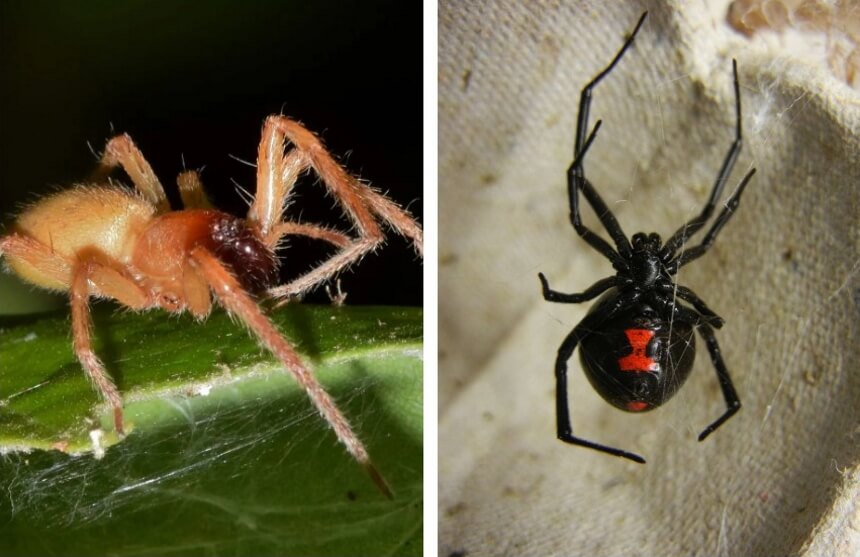
You likely are familiar with some of the most common spiders, particularly the types that you’ve been told to stay away from because they are poisonous. But when you break it down, there are a ridiculous number of spider species out there.
When you break it down, there are more than 45,000 species of spiders. However, some of these are very rare while others are seen as being common and are much more likely to be found. On top of that, certain spiders might only be found in certain parts of the world.
These are some of the most common species that you might see, particularly around your home.
These are the most common that are found near homes but there are certainly a lot more types out there that you could come across.
In general, spiders eat insects. Spiders are not inherently large so their insects are going to be things like the size of flies, mosquitoes, fleas, ticks, and other small insects. In fact, these are the very insects that you probably don’t want in or around your home so the spiders just might be doing you a favor.
While these tiny pests are the most common diets, you might be surprised to find that some spiders out there eat larger insects. In fact, there are even spiders that might eat things like lizards, rodents, and birds. This is not the norm and is primarily related to exotic spiders or large tarantulas that you don’t see around every day.
If you have a spider that you want to keep fed, you might be able to try something like live mealworms for sustenance.

Other spiders learn how to fish and create special traps out of their webs so they can be alerted when their prey is near. The alarm systems they build allow them to then catch the prey as well. Many species use their webs to capture their prey.
Those species have incredibly unique webs that capture their prey and make them stick to it. The concept of the web is pretty neat. While other things that come into contact with a web will stick to it and possibly get trapped in it, spiders can easily glide along the surface. Webs are silky and a fully-built web can be amazing to look at with its intricate patterns and designs.
Spiders are considered to be predators, regardless of what they choose to eat. Large spiders like the wolf spider are born hunters and they actually physically move about to hunt down prey for their feeding. There are other species like this as well.
The differences in how they catch prey are unique. While some are hunters, others are hiders. Some like to trap their prey and others like to snatch it up or sneak up on it and attack. Many use their webs to assist them while others use brute force alone.

You might be tempted to just grab your traps for spiders or maybe even the best foggers for spiders when you’re worried about an infestation. We get it. Spiders can be scary or intimidating and they certainly look frightening at times. Arachnophobia is very real and a good number of people experience this deep-rooted fear of spiders.
However, when spiders are in your home, they can actually help keep some of the worst pets at bay. That is what the majority of common spiders feed on. A common spider with no special diet will eat tiny pests like ants, beetles, moths, flies, fleas, and more. They could be doing you a favor when you think about it.
Did you know that collectively speaking, spiders help to eradicate more than 100 million tons of pesky insects like these every single year? They like easy food like this and even like water but they don’t want to have to search for it. Which is why they lurk indoors so often.
While humans and even our normal furry friends will eat at least once a day, this is not the case with spiders. These creatures can last more than a month without a meal in most cases. On average, they can go anywhere from 30-60 days between feedings.
Of course, most of the spiders will still feed if the opportunity arises, even if they are not at the point of absolutely needing to eat. If a fly comes by or something gets trapped in its webs, they take advantage of that opportunity.
There are times that spiders may die from not eating, particularly if they are exposed to harsh or unfavorable conditions. If a spider doesn’t have an opportunity to eat for an extended period of time, it will probably be just fine until they do find that fly or another nasty pest to feed itself.
The truth is that they simply don’t need much food to survive and can eat sporadically and be just fine in doing so. While some larger spiders do need larger meals, these are often the spiders that can go longer periods without eating as well.
Most spiders will take a meal when they can get it, simply to be proactive since they never know when their next meal is going to come scurrying along for them to feast on.
If you have a pet spider and need to get down a feeding schedule, the experts recommend offering your spider food at least once a week. When the spider is young, you may need to offer food every four or five days. As they get older, you can likely go seven to ten days between offerings.
They may not eat every single time but you should offer them meals so they can eat if their body needs the sustenance. This could differ depending on your spider species so be sure to do some research or chat with someone knowledgeable in this area.
Some spiders love moisture and need a lot of moisture, while others only need moisture occasionally. Spiders need water to survive, they just don’t always need a lot of it. The insects that they consume have bodily fluids that sustain a spider but water remains necessary for survival. Their need for water grows as they go without food as well.
Just like they can live for long periods without food, water is not needed often. This could be why you find them in places like your sinks or bathtubs. They head there for the moisture. A spider can drink but it can also soak up moisture just by being around it. They can even benefit from high humidity in many cases.
If you have a pet spider, you might want to consider providing them with a dish with water like this popular choice. You could even create something like a pond in their enclosure to make it more realistic for them if you prefer.
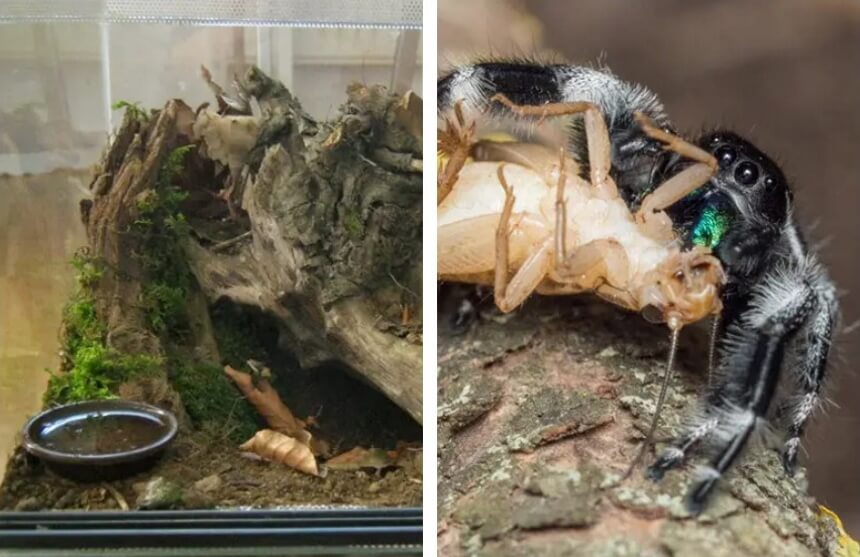
Your pet spider will have very specific feeding needs. It is best if you set up a routine for them but also allow them to hunt or spin a web if that is in their nature. This allows them to continue living the type of lifestyle they were born to have, even if it is modified as their pet.
We touched just slightly on feeding and even watering above but let’s dig just a little deeper into correctly feeding a pet spider, shall we? Spiders are mostly carnivores, which is where things like insects come into play. However, some spiders also like sweet things and will gladly take a treat like fruit where they can enjoy the nectar.
When you give a spider fruit, they won’t actually chomp on the fruit. It doesn’t work that way. They will use their fangs to ingest the liquid or nectars of the fruit and feast on the sweetness in that manner. They do similar things to the insects that they eat.
Spiders don’t munch up insects but rather use their fangs to drain their insides, almost like a protein shake.
Most pet spiders will eat whatever insects you provide them with. Mealworms make a simple option that you can purchase in bulk and have on hand. You will want to feed them approximately once a week. When they are babies, they might need to be fed every 4-5 days as they grow.
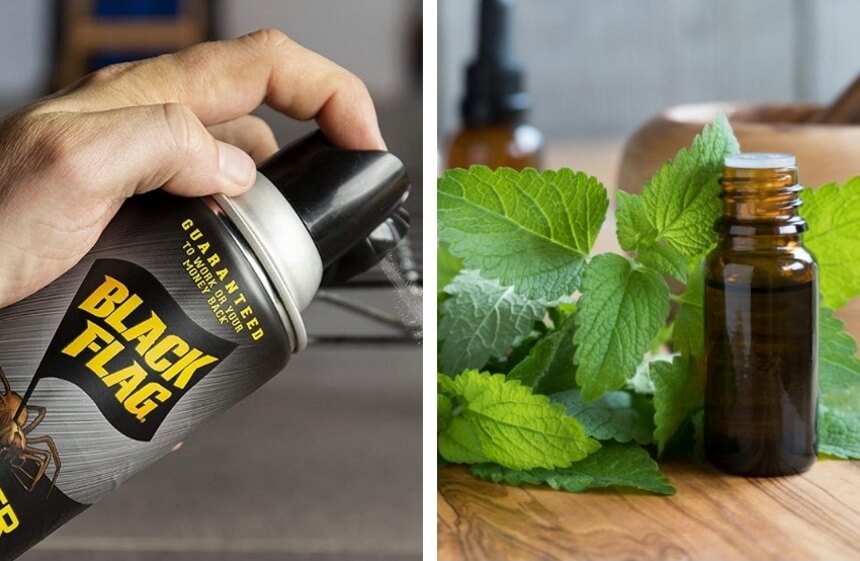
While spiders can have some benefits, it doesn’t mean that we want our homes to be overrun by them. We have to consider that spiders can bite, even when they might not be poisonous. They also do intimidate many people who would rather not see them around their home, particularly inside.
Another concern could be those poisonous spiders and keeping them away from your home and family. There are several things you can do to get rid of spiders or even deter them. You can use traps, sprays, and foggers for DIY processes to kill spiders or repel them and keep them at bay.
Some people prefer to treat the outside of their homes and set up a barrier that just keeps the spiders outside. You can use one of these best outdoor spider sprays for that. These sprays typically will put a safety net around the perimeter of your home that kills spiders and then makes others want to stay far away. The goal is to keep them outdoors.
In addition to these options, you can also do some other things to help. Check out these tips.
When you think about what do spiders eat, most of them are just looking for insects. Those that prefer other sustenance are rare and not likely to be found in your home. There are many ways that you can feed your pet spiders and several options to keep unwanted spiders out of your home as well.
Understanding the different options is vital to taking care of your spider situation.


